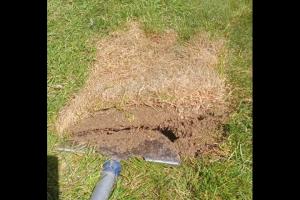What is a flood?

According to the United Nations World Water Development Report 2020 , flooding and extreme precipitation linked to climate change have increased worldwide by 50% in the past decade, and currently are occurring four times more frequently than in 1980.
1 . What are floods?
A flood is the occupation by water of areas or regions that are usually dry, as a result of the unusual and more or less sudden inflow of water that exceeds the maximum discharge that a river or stream channel can carry.
2 . Types of floods
Floods are considered as sudden onset phenomena, although how suddenly they occur depends on the type:
Sudden or flash floods: They usually happen after very heavy rainfall. Riverine floods: they are mostly seasonal. They are caused by surface running waters (rivers, streams and creeks). Coastal floods: caused by water from the sea, as a result of tsunamis or storm surges.3 . How do floods occur? Causes
The causes of floods can be grouped into three groups that determine whether floods are considered natural, induced or mixed:
Climate-related causes: due to precipitation of unusual intensity and/or duration, tropical cyclones (which are called hurricanes, typhoons or just cyclones depending on where they originate, or a cold drop or cut-off low (depression) that triggers torrential rain (common in the Spanish Mediterranean coast). Geological causes: they refer to the rocks in the basin, the river basin network (forms, types), the characteristics of the riverbeds (forms, gradients), slope movements and instability, and the restrictions to river run-off due to the accumulation of sediments at the mouth. Anthropogenic causes: they are a result of human actions, such as deforestation, river encroachment by different types of structures, dam rupture, etc.It should be noted that the severity of floods depends on several factors, such as the depth of the water, the duration of the flood, the velocity of the water, the rate at which the water rises, the frequency of occurrence, and the season.
4 . Consequences of floods
Floods are the most common natural hazard in the Mediterranean region and worldwide they are one of the hazards that results in most economic losses. The consequences of floods may be:
Social: some of the immediate impacts of floods are the loss of human lives, damage to property, as well as loss of livelihoods and psycho-social impacts. All of that, together with the associated economic impact, can lead to mass migrations. Economic: reduction of the purchasing power and productive capacity of a region, as well as damage to structures. This is in addition to the costs of recovery afterwards. Environmental: floods can destroy the flora and fauna of ecological communities and hinder the capacity of species to germinate and colonise an area. They may also contribute to the dispersal of pollutants and result in major changes in water courses.








